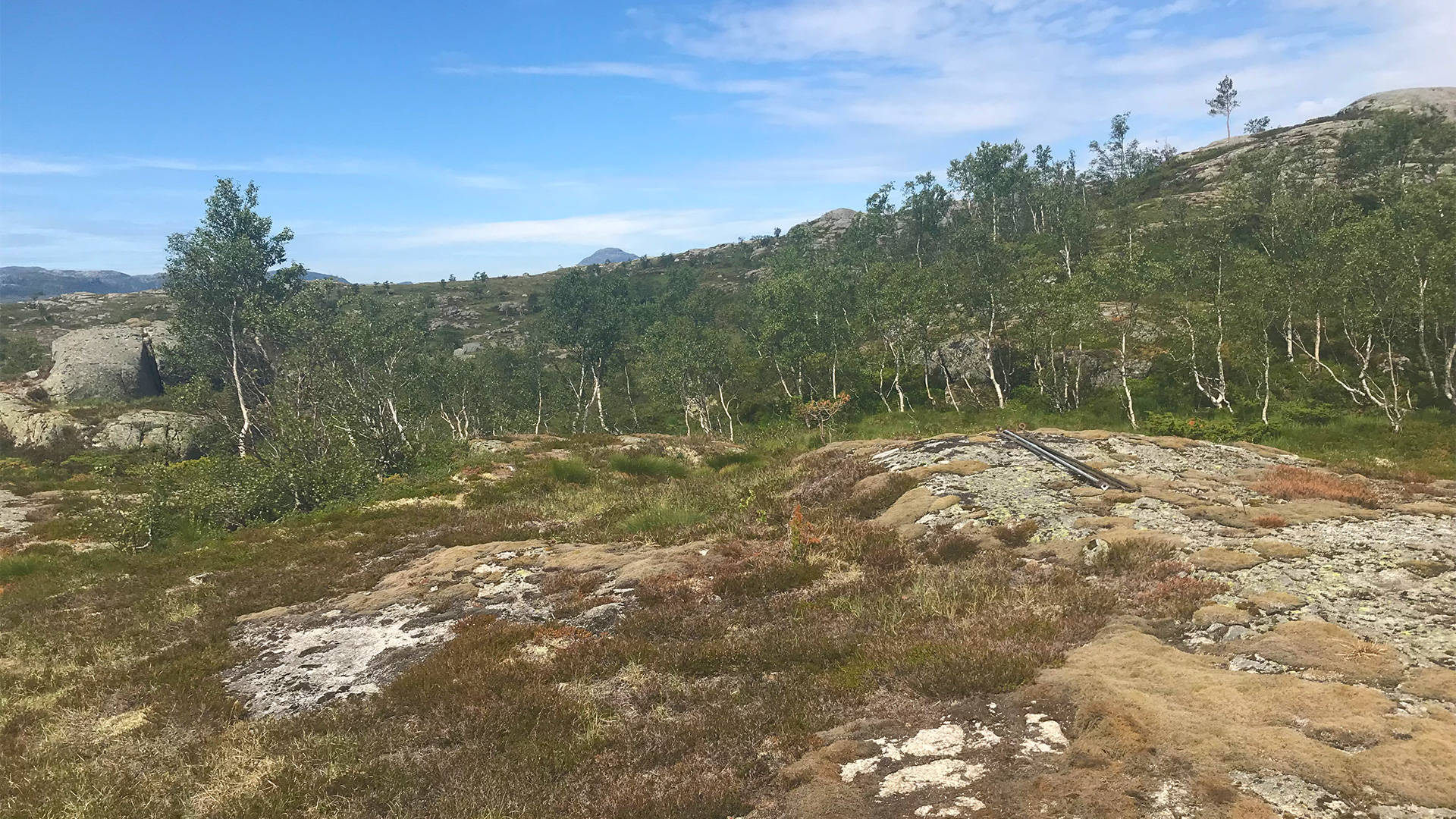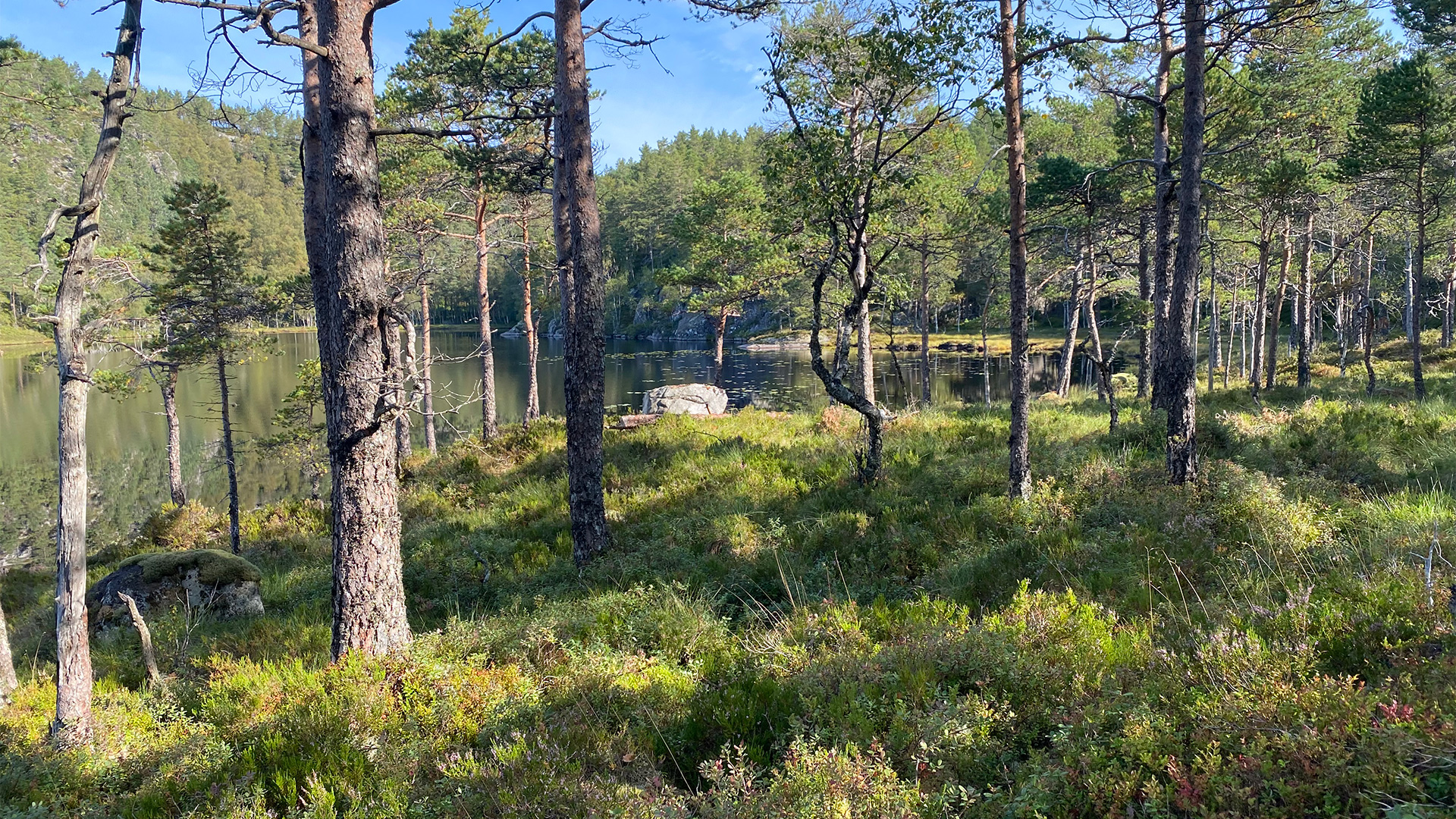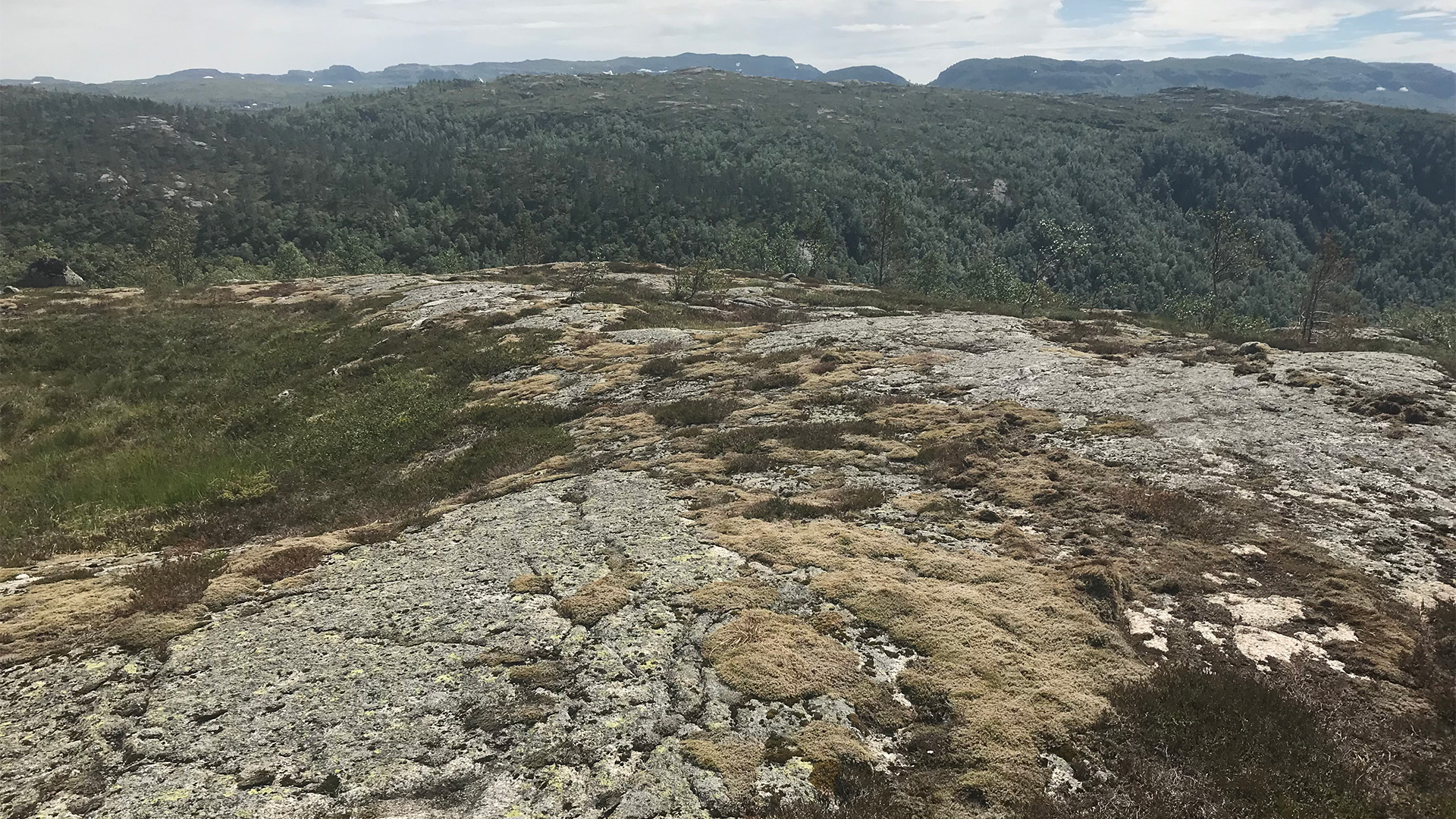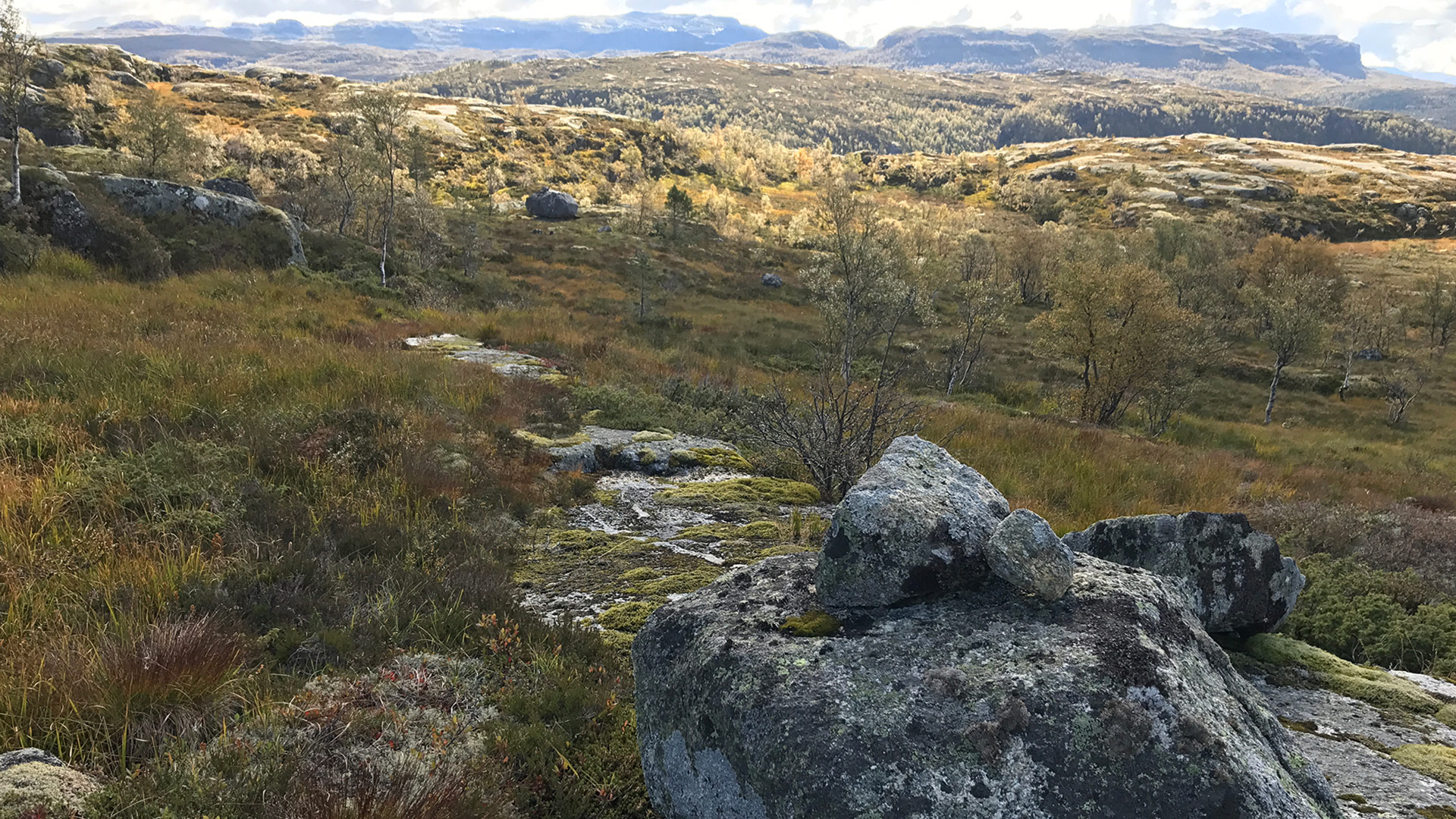
Background for protection and threats
The protection objective of the nature reserve is to safeguard an area that represents a specific type of nature in the form of a large, contiguous forested area consisting of particularly nutrient-poor and moist coastal pine forest. The area also has elements of old pine forests, and deciduous tees growing on richer ground including large, old pollarded ash trees. Currently, there are no major threats to the heritage values at Nordraheia.
Plant life and wildlife
The vegetation at Nordraheia consists mainly of types of vegetation that do not require a lot of nutrients. Pine and birch are the dominant species of tree, where the birch trees prefer to grow lower down the hillsides and the pine trees grow in the higher lying areas. In addition, a few rowan and aspen trees are scattered around the area. The dominating type of vegetation is blueberry forest that transitions into heather and bog bilberry pine forest in places. Down towards Jøsenfjorden, there are some small areas of deciduous forest where ash is the most common species of tree. Birds such as white-backed woodpeckers, capercaillies, eagle owls and white-tailed eagles nest at Nordraheia. There are also populations of moose and red deer.

Past use of the area
There are many cultural traces left behind from early settlement, grazing, forestry and net fishing at Nordraheia. The crofter’s farms at Gåsnes, Galgehaugen and Følekammane were active in the 19th century and are located on the hillside above Jøsenfjorden. Visitors can still see the old foundations of these farms at Gåsnes and Følekammane. The crofter’s farms at Holmen and Sandvika were located on the north side of Fundingslandsvatnet lake. There are still some pollarded ash and elm trees down by the shores of Jøsenfjorden that are evidence of locals harvesting leaves for animal fodder.

Current use
Today, Nordraheia gets very few visitors, and the majority of those that do come are there to go on hikes or to pick berries. Some of the old netting sites can be found down by Jøsenfjorden and are still in use.

Sources and further reading
Verneforskrift på Lovdata Appelgren L. 2017. Naturverdier for lokalitet Bulia, registrert i forbindelse med prosjekt Kystfuruskog 2016. NaRIN faktaark. BioFokus. Ihlen, P.G & Blom, H.H. 2008. Bekkekløftprosjektet – Naturfaglige registreringer i Rogaland 2008: Hjelmeland kommune. Rådgivene biologer AS. Strøm, K.B., Appelgren, L., Tysse, T. & Oddane, B. 2016. Naturfaglige registreringer i skog 2016. Frivillig vern – Funningsland. Ecofact rapport 574.
